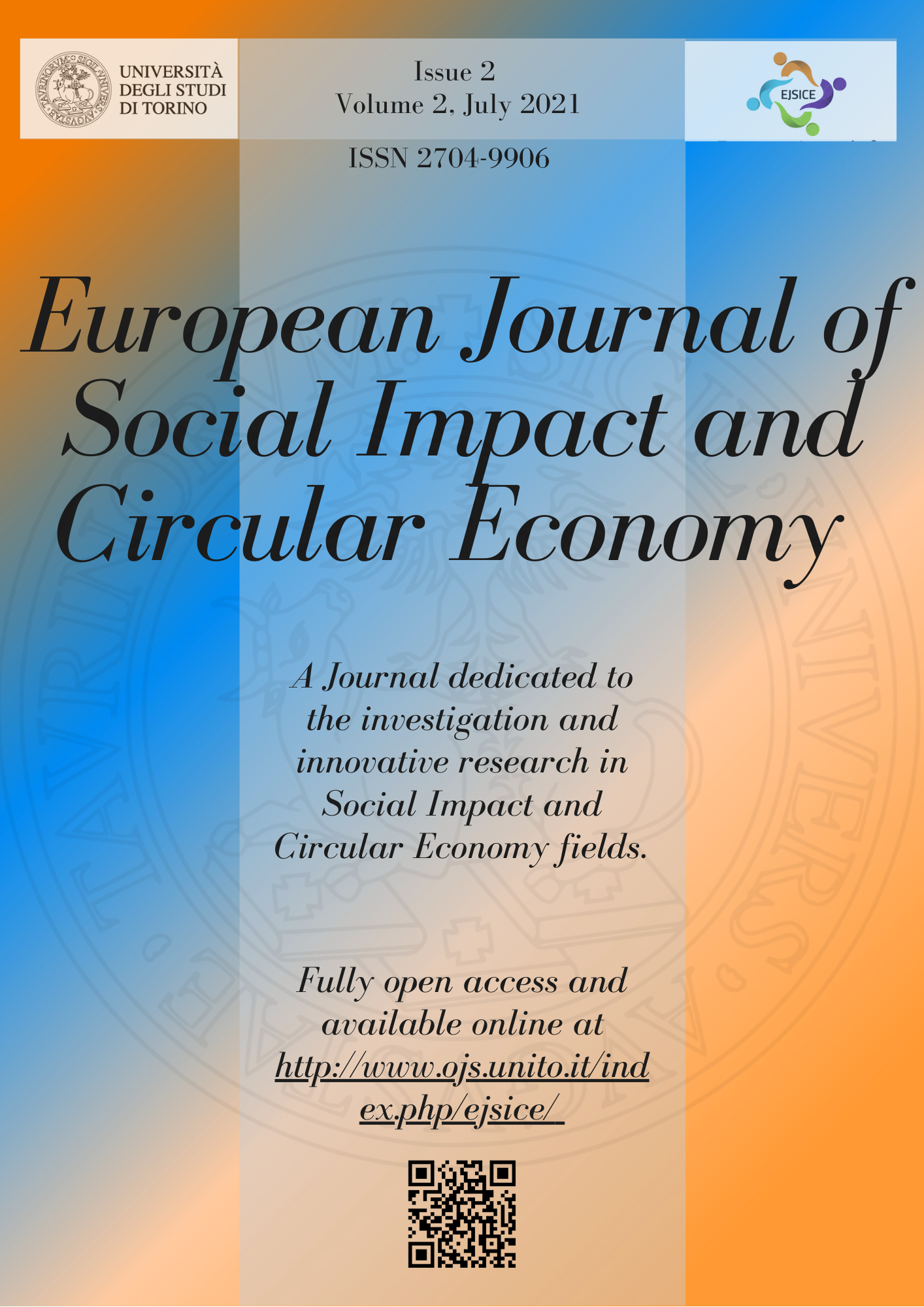Steps from Zero Carbon Supply Chains and Demand of Circular Economy to Circular Business Cases
DOI:
https://doi.org/10.13135/2704-9906/5712Keywords:
net-zero, circular economy, zero carbon approach, business case, zero carbon supply chain, life-cycle thinkingAbstract
The European Green Deal requires a zero-carbon Europe until 2050. Consequently, all processes conducted, and actions taken need to ensure zero carbon emissions. Beside the areas of energy systems, logistics and living, it certainly also includes industry sectors, industrial processes and their entire supply chains. Zero carbon supply chains mean net zero carbon emission from scope 1, 2 and 3. The key question for future business is therefore how to reduce the carbon emissions of all procured components down to zero, beside all procured and consumed energies (scope 1 and 2). A promising approach is a circular economy, if primary produced materials will not be provided carbon neutral or will increase in price. However, today the development of circular business models often is a chicken and egg problem. It needs a clear business case to invest into changes, adaptions, substitutions or life cycle system adjustments of linear products (take, make, dispose) to turn them into circular products or product systems (avoid, re-use, recycle, recover). The paper presents approaches to support companies seeking carbon neutral products in a carbon neutral Europe via identifying business cases for circular products. An evaluation matrix is presented allowing the identification of circularity status depending on the selected products or sector perspective. The matrix contains evaluation criteria based on the circularity building blocks by the Ellen MacArthur Foundation. Based on the results, hot spots and weak points are identified and allow entering a six-step-approach for business-case identification. The steps refer to life cycle thinking, quantitative environmental assessment, simulation, creativity methods and end up identifying profitable business cases for circularity. The presented approach combines life cycle assessment, circular economy and the development of business models and is partly developed and applied during the European H2020 project AVANGARD.
References
Clark, Ch. H. (1989): Brainstorming: How to Create Successful Ideas. Wilshire Book Company.
Dilts, R., Epstein, T., & Dilts, R. W. (1991). Tools for dreamers: Strategies for creativity and the structure of innovation. Meta Publications.
Ellen MacArthur Foundation. (n.d.). Building Blocks. Retrieved March 15, 2021, from https://www.ellenmacarthurfoundation.org/circular-economy/building-blocks
European Commission. (2019). A European Green Deal. https://ec.europa.eu/info/strategy/priorities-2019-2024/european- green-deal_en
European Commission. (2020). EU Circular Economy Action Plan. https://ec.europa.eu/environment/circular-economy/
Fink, L. (2018). Larry Fink’s Annual Letter to CEOs – 2018 – A sense of purpose. http://www.corporance.es/wp- content/uploads/2018/01/Larry-Fink-letter-to-CEOs-2018-1.pdf
Greenhouse Gas Protocol. (2011). Corporate Value Chain (Scope 3) Accounting and Reporting Standard.
Higgins, J. M.; Wiese, G. G. (1996). Innovationsmanagement. Kreativitätstechniken für den unternehmerischen Erfolg. Springer. https://doi.org/10.1007/978-3-642-61431-6
International Organization for Standardization (ISO). (2006a). ISO 14040:2006: Environmental management — Life cycle assessment — Principles and framework.
International Organization for Standardization (ISO). (2006b). ISO 14044:2006: Environmental management — Life cycle assessment — Requirements and guidelines.
Kirchherr, J., Reike, D., & Hekkert, M. (2017). Conceptualizing the circular economy: An analysis of 114 definitions. Resources, conservation and recycling, 127, 221-232. https://doi.org/10.1016/j.resconrec.2017.09.005
Matthey, A, & Bünger, B.. 2019. Methodenkonvention 3.0 zur Ermittlung von Umweltkosten: Kostensätze. Dessau: Umweltbundesamt.
Peña, C., Civit, B., Gallego-Schmid, A., Druckman, A., Caldeira-Pires, A., Weidema, B. & Motta, W. (2021). Using life cycle assessment to achieve a circular economy. The International Journal of Life Cycle Assessment, 1-6. https://doi.org/10.1007/s11367-020-01856-z
Sachse, P., & Specker, A. (1999). Design Thinking: Analyse und Unterstützung konstruktiver Entwurfstätigkeiten. In Proceedings of the 12th International Conference on Engineering Design: communication and cooperation of practice and science. 2 (Vol. 26, pp. 941-946). Technische Universität München, Konstruktion im Maschinenbau.
Schmidt, G. (2000). Methode und Techniken der Organisation. Verlag G.
Schulz, S. (2020, October 29). What Does “Net Zero Emissions” Mean and How Can Businesses Achieve Net Zero?. Sphera. https://sphera.com/glossary/what-does-net-zero-emissions-mean-and-how-to-achieve/
Science Based Targets Initiative. (2021) Companies taking action. https://sciencebasedtargets.org/companies-taking-action
Science Based Targets Initiative. (2018). Value Change in the Value Chain: Best Practices in Scope 3 Greenhouse Gas Management
Science Based Targets Initiative. (2020). Foundations for Science-Based Net-Zero Target Setting in the Corporate Sector.
Solomon, D. (2021) Goldman Sachs Update on Our 2030 Sustainable Finance Commitment. https://www.goldmansachs.com/media-relations/press-releases/2021/announcement-04-mar-2021.html
Southpole. (n.d.) Carbon Offsets Explained. Retrieved March 15, 2021, from https://www.southpole.com/carbon-offsets-explained.
Zwicky, F. (1966). Entdecken, Erfinden, Forschen im morphologischen Weltbild. Droemer/Knaur.


 EJSICE has been approved for inclusion in DOAJ. The DOAJ listing of the journal is available at
EJSICE has been approved for inclusion in DOAJ. The DOAJ listing of the journal is available at  EJSICE is a member of
EJSICE is a member of  EJSICE is indexed by
EJSICE is indexed by  EJSICE is listed in the ANVUR (Italian National Agency for the Evaluation of Universities and Research Institutes) as a scientific journal in AREA 13 - Economic and Statistical Sciences and AREA 14 - Political and Social Sciences.
EJSICE is listed in the ANVUR (Italian National Agency for the Evaluation of Universities and Research Institutes) as a scientific journal in AREA 13 - Economic and Statistical Sciences and AREA 14 - Political and Social Sciences. 

